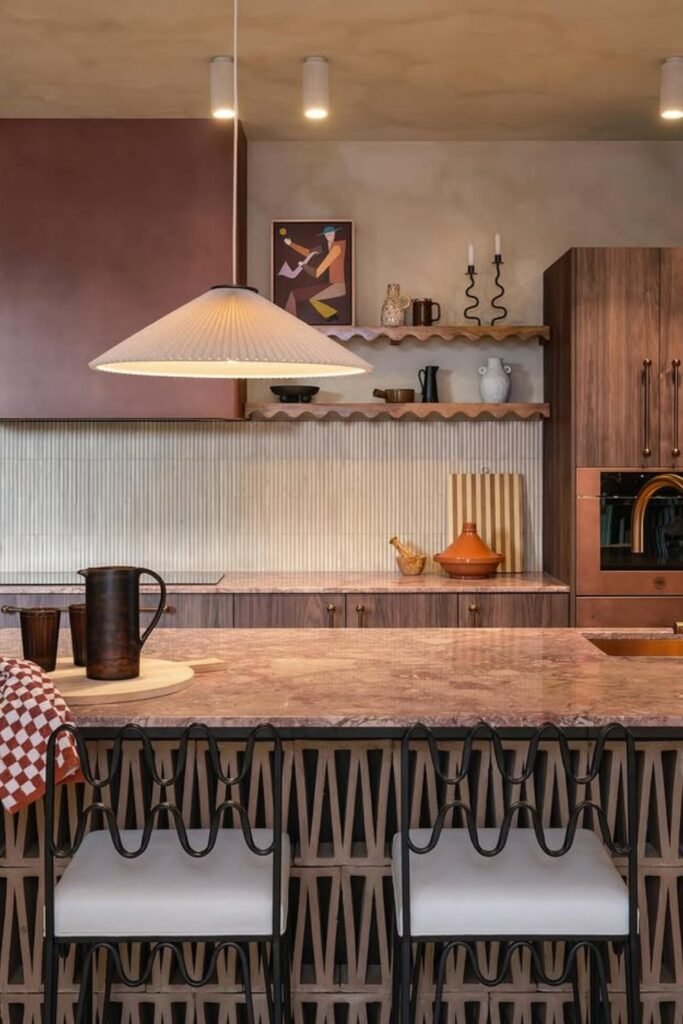25 Kitchen Lighting Ideas for 2025
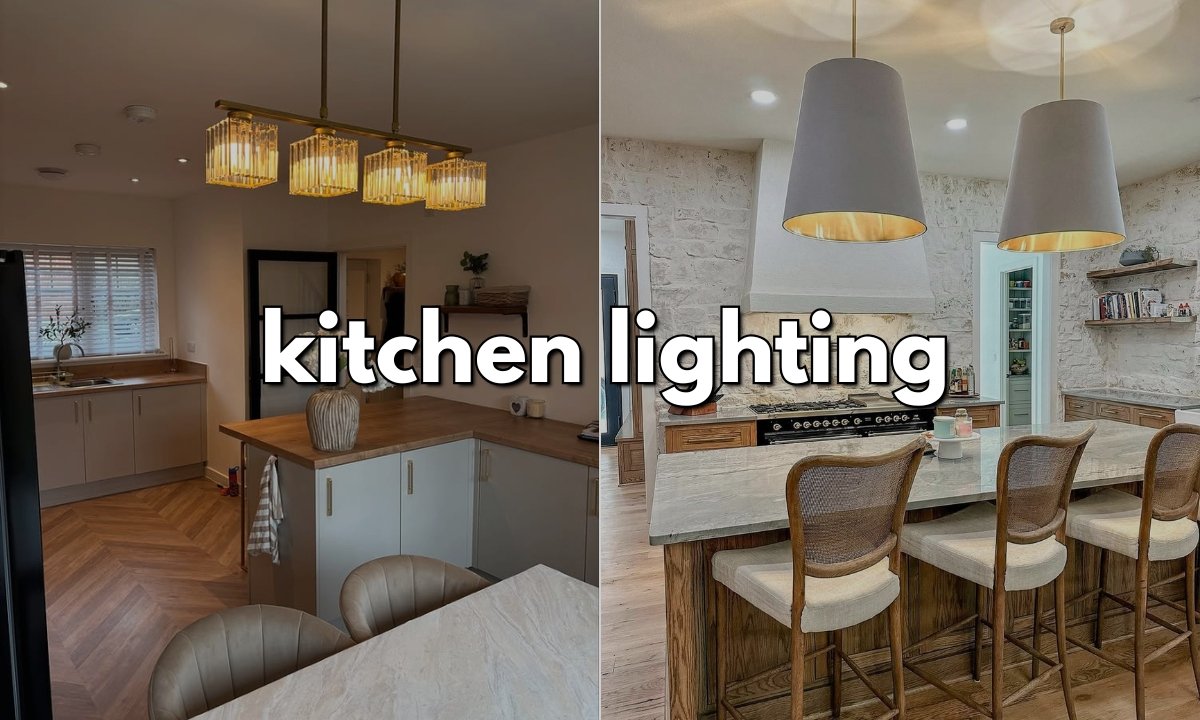
Whenever you walk into your kitchen and think why does it still feel so dull, even when it is spotless?
So, there might be a problem with your lighting.
Because bad kitchen lighting does not just make your space look flat, it also makes cooking hard.
If your kitchen feels more like a work zone, than a welcoming space, don’t worry you are not alone.
Because in this article your problem is going to be solved. I will walk you through the exact lighting types every kitchen needs, how to layer kitchen lights and more of that to provide you with real life examples.
Let’s jump into it!
What Type of Lighting is Best for a Kitchen?
You can not rely on just one light in your kitchen.
If you have got a ceiling fixture, that’s exactly why your kitchen feels off.
The best lighting setup uses three layers; ambient, task and accent lights.
Each one has its own job to do.
1. Ambient Lighting
It is your general lighting, the one that lights up the whole room.
It usually comes from ceiling fixtures like recessed lights, flush mounts, and central pendant.
But ambient light should never be the only source of light in your kitchen.

Because it creates shadows and flat spots, especially around cabinets and prep zones.
So, if you are starting fresh, then you should go for evenly spaced recessed lights across the ceiling.
If you already have a single central fixture, then add a few plug-in wall sconces and battery operated lights to help spread the glow.
2. Task Lighting
It is the one most people skip and regret it.
Task lighting focuses on the areas where you will actually do stuff, like chopping, cooking and reading recipes.
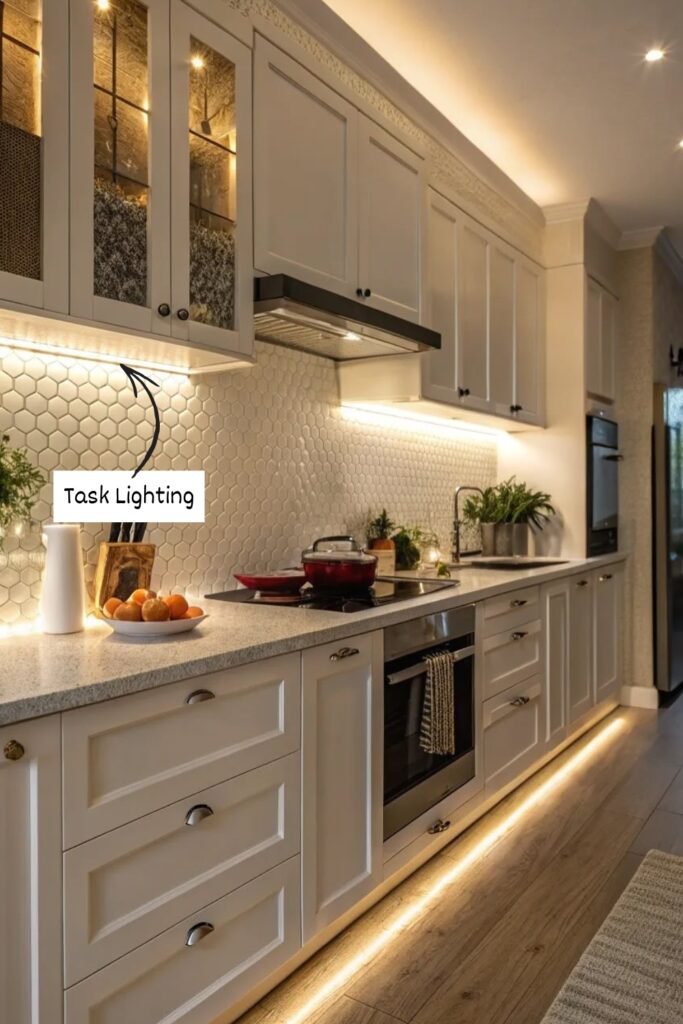
Without task light, you will always end up with shadows where you need clarity most.
Here’s the best spots for task lighting:
- Under the cabinets
- Above the sink
- Over the kitchen island and stove
You can consider LED strip lights under cabinets, pendant lights over the island, and even small spotlights aimed at prep areas.
3. Accent Lighting
It is where you bring in personality.
Accent lights do not do the heavy lifting, but they can make your kitchen feel finished.
You can think of open shelf lighting, cabinet up lights, and a small lamp on the corner counter.
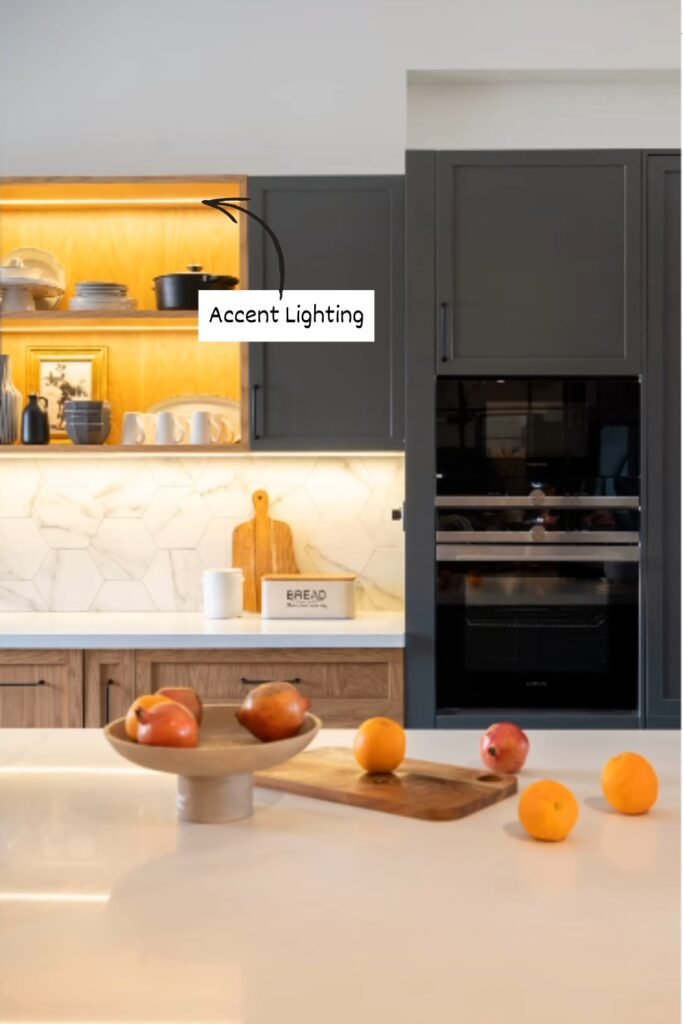
It will add depth, softness, and the cozy vibe you have been missing.
So, do you want a warm, welcoming glow at night without lighting up the whole room?
Then accent lighting is the best option.
You can use dimmable LED strips, puck lights inside glass cabinets, and even a small plug-in sconce near the backsplash.
What is the Best Way to Do Kitchen Lighting?
If you want your kitchen lighting to actually work then you need to plan it based on how you use your space.
Most of the kitchens go wrong because the lighting is not placed right, the layers are not balanced and the bulbs are way off in tone.

Here’s step by step method how you can do it:
1. Start with Your Layout
You should not copy what you saw on the internet if your kitchen layout is completely different.
For example a galley kitchen needs different lighting than an open-plan kitchen with a big island.
So, you have to look at where you prep, cook, clean and gather and then build your lighting around that.
- Have an island? Then you need pendant lights above it
- Do you have a small galley kitchen? Then you can consider recessed lights spaced equally down the middle work best
- No overhead fixture? You can think of wall sconces and under-cabinet lighting to pick up the slack.
2. Layer Your Lighting
You are not lighting a warehouse, you are lighting a home.
One bright light in the center would not cut it.
You need layers as we discussed above.
- Ambient to light the full space
- Task light where you work
- Accent light to add mood and highlight details
3. Get the Placement Right
This is where most of the homeowners mess up.
Lights too high and close together throw weird shadows and glare.
So, here’s what you should do:
- Pendant over island: You should hang them 28-36 inches above the countertop and space them about 30 inches apart
- Recessed lights: If you are using recessed lights then you should space them about 4-6 feet apart, and it depends on your ceiling height.
- Under-cabinet lights: Place them close to the front of the cabinet, not the back; otherwise, you will get ugly shadows on your counter.
4. Choose the Right Bulb Temperature
If your kitchen feels cold and washed out, then your bulbs are probably too cool in color.
You should consider warm white (2700K-3000K) for a cozy fee, neutral white (3500K) if you want it bright but natural.
You should avoid daylight bulbs (5000K) unless you are filming a cooking show.
5. Add Dimmers
It is one of the simple upgrades that will give you control over the mood.
For example bright for cooking, soft for late-night snacks and hosting.
Dimmers work with most LED bulbs and fixtures; you just have to make sure everything is compatible.
25 Kitchen Lighting Ideas You Can Try in 2025
Layer a Table Lamp by the Sink
This setup proves you do not need built-ins to create layered lighting.
You can add a patterned table lamp right on the counter next to the sink, and it will add a soft glow that will work as accent and task lighting.
It is perfect for kitchens without under-cabinet lights and where you want a lived-in, welcoming vibe.

Mix Pendants with a Table Lamp
If you layer two completely different light sources in one corner it will make your kitchen feel more personal and functional.
You can think of hanging pendant over the sink that will work as a task light, and a bold sculptural table lamp that will add ambient warmth to the back counter.
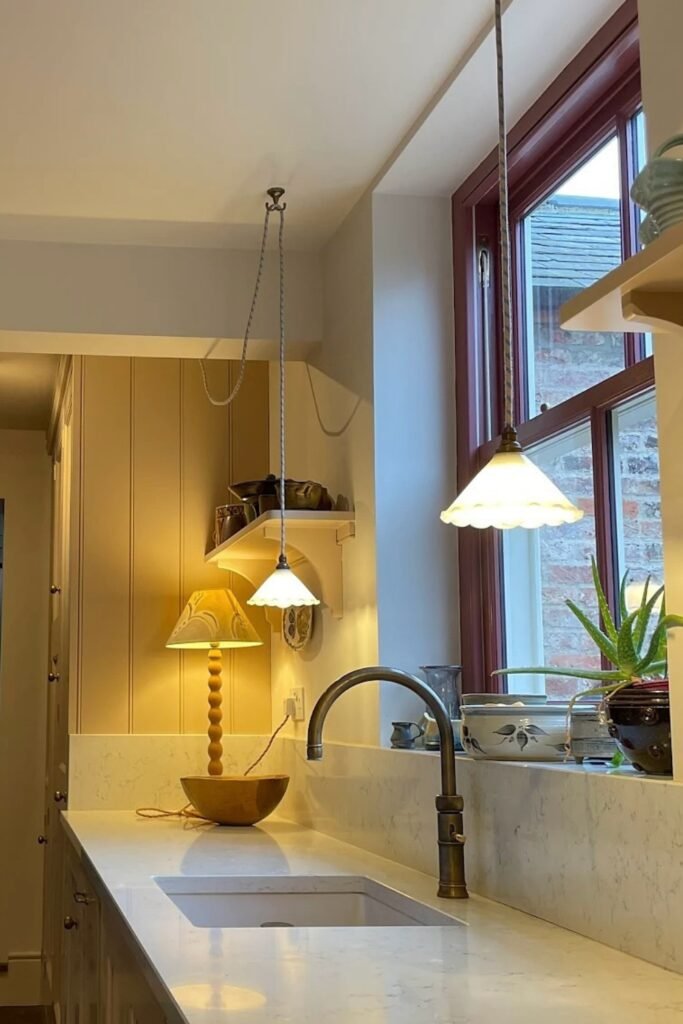
Light Up Open Shelves
Built-in spotlights above open shelves can pull double duty, they will showcase decor and work as subtle accent lighting.
It will work best if you have a minimalist kitchen where you want to keep things clean but still layered.
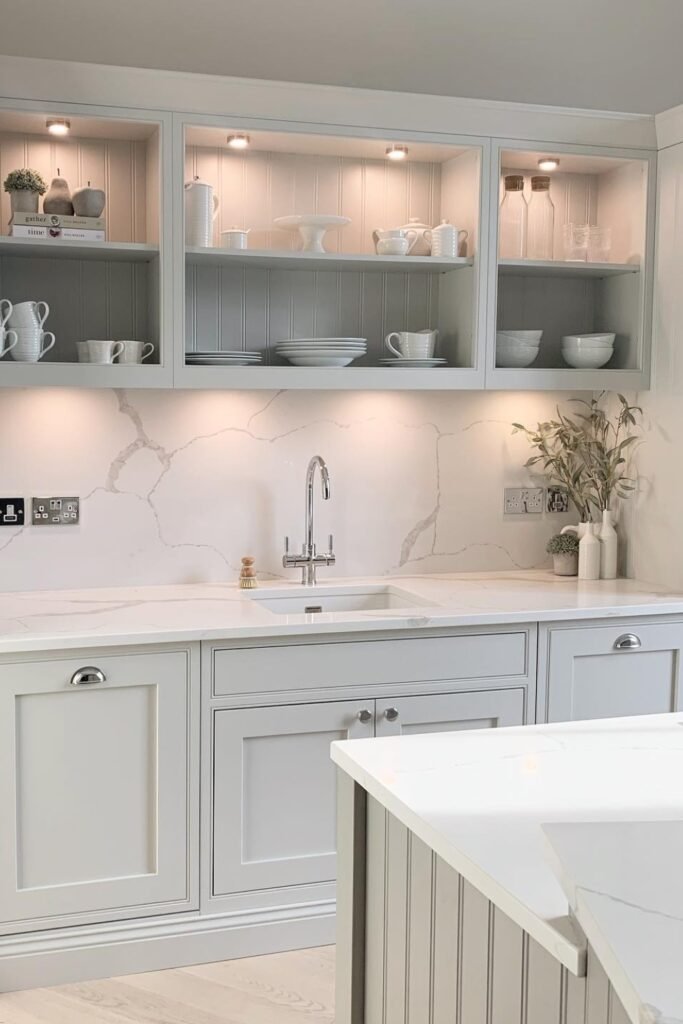
Add Strip Lights Inside Cabinets
LED strip lights when hidden inside glass cabinets can elevate the entire corner without taking up extra space.
It is a smart way to layer accent lighting without crowding the walls and ceiling.
You can consider white strips around 3000K and stick them under each shelf to create soft and even lighting.
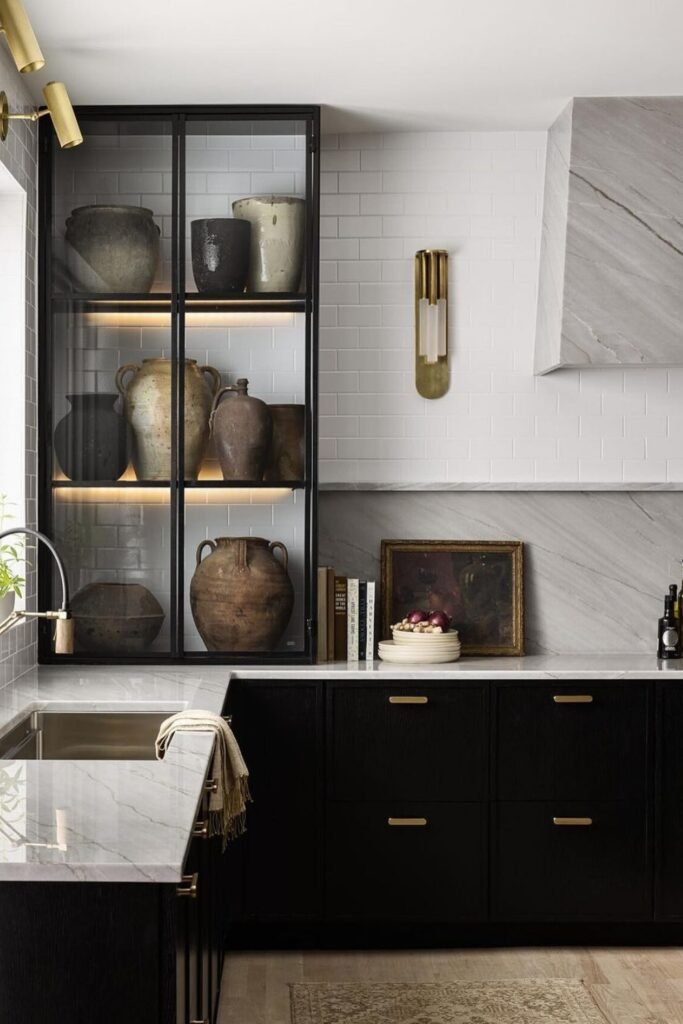
Use a Linear Chandelier Above the Island
A linear chandelier like this one can spread light equally across the full length of the island without crowding your ceiling.
It is perfect for a wide kitchen where multiple pendants would feel too busy and cluttered.
To get this right, you have to center the fixture above the island and hand it about 30-36 inches from the countertop.
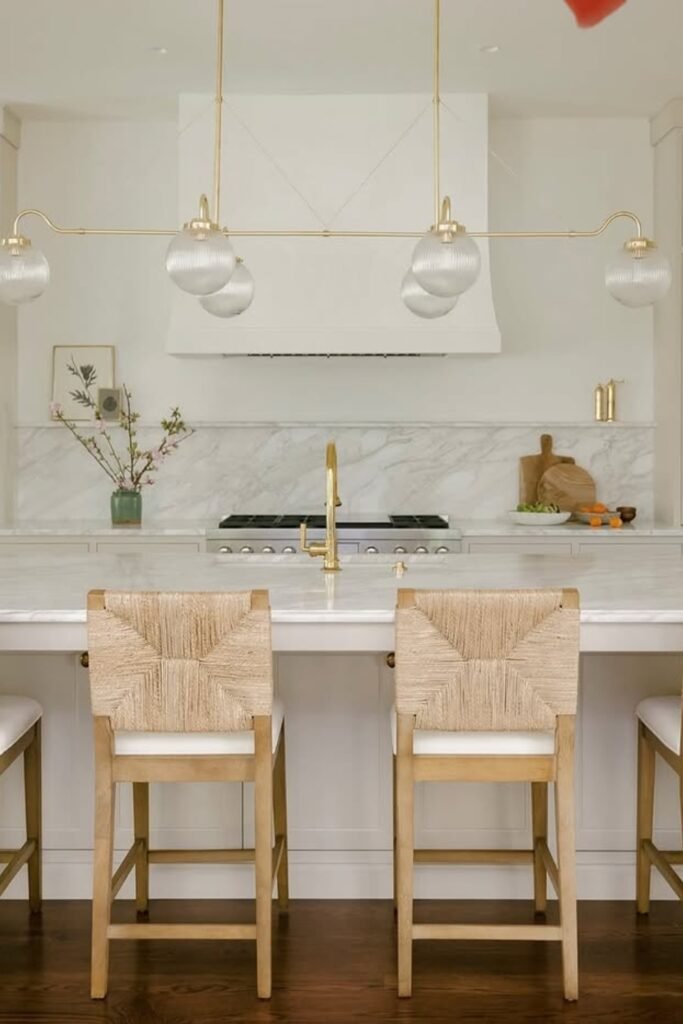
Bold with Black Mesh Pendants
These oversized black mesh pendants can bring contrast and texture with provision of direct task lighting over your island.
The open weave will soften the glow without blocking lighting and make them great for kitchens with lots of natural daylight.
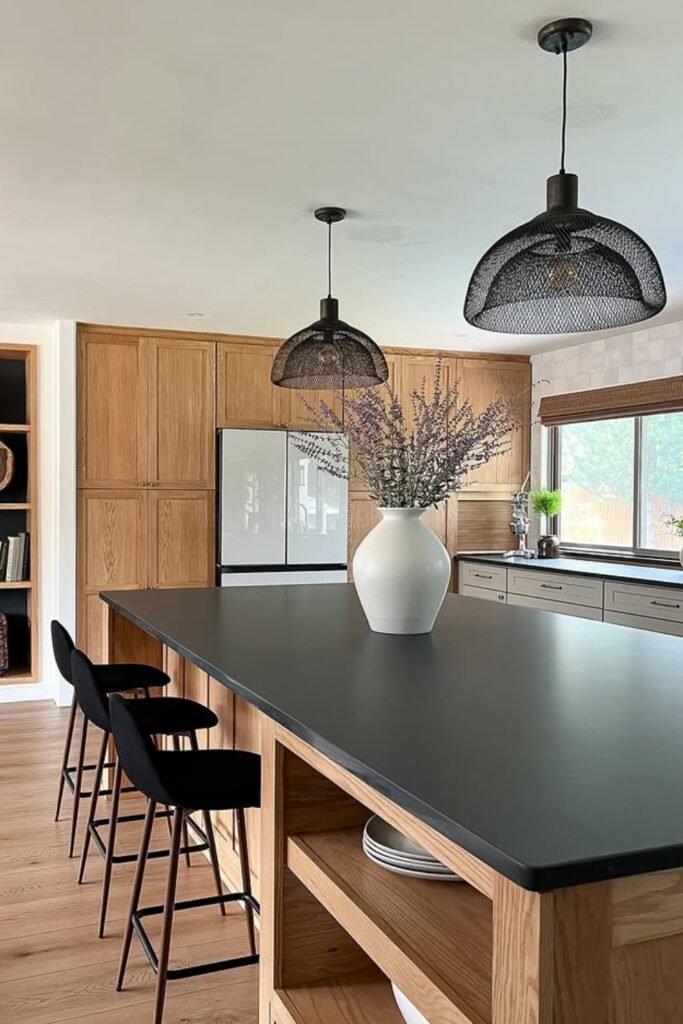
Frame the Island with Sculptural Pendants
If your island feels visually flat, then oversized open-framed pendants like these will add depth.
You can consider bold gold finish pendants as they will work as statement pieces, and the open design will keep the lighting airy and bright.
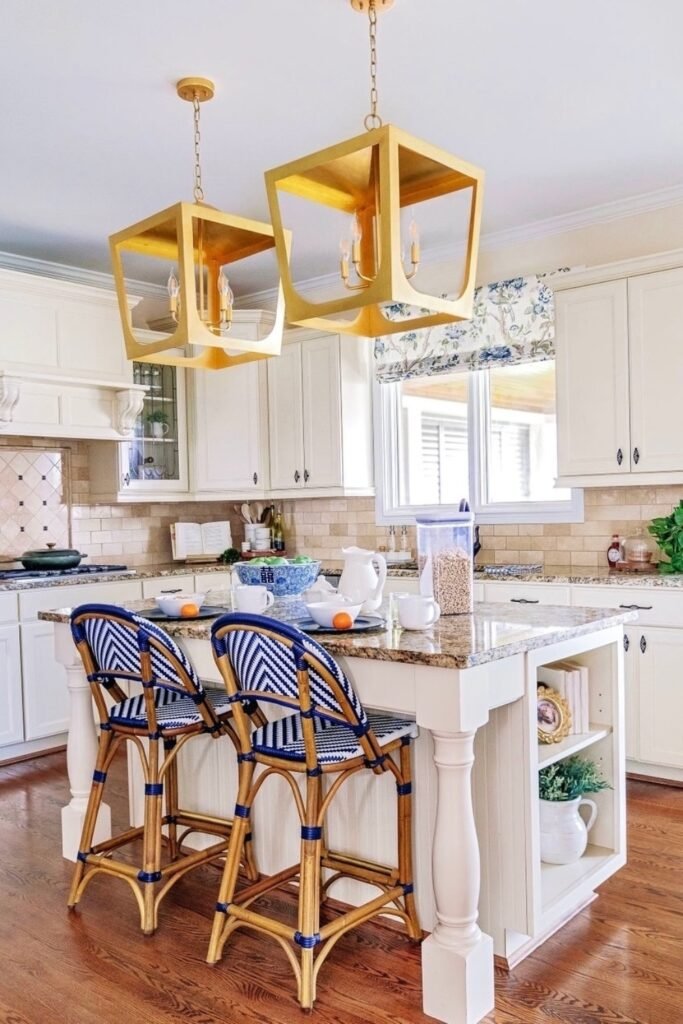
Mount Sconces Beside Window
Not every kitchen has space for overhead lights, wall sconces flanking a window are a smart workaround that can add both light and symmetry.
You can consider warm brass sconces to bring soft ambient glow right above your kitchen sink, and they will also become part of your decor.
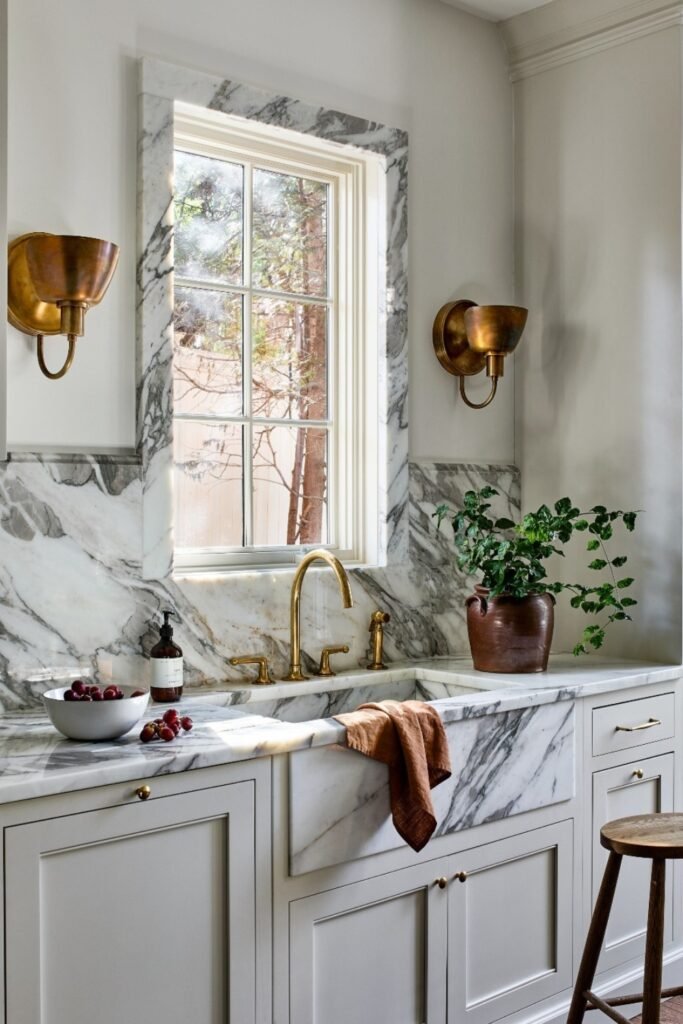
Combine Sconces and Pendants
When natural light floods into your kitchen from multiple windows, you should consider layering different lights.
For example you can consider pendant lights over the island and sconces between the windows.
The pendants will act as task light to your prep space, and the sconces will be your warm ambient light.
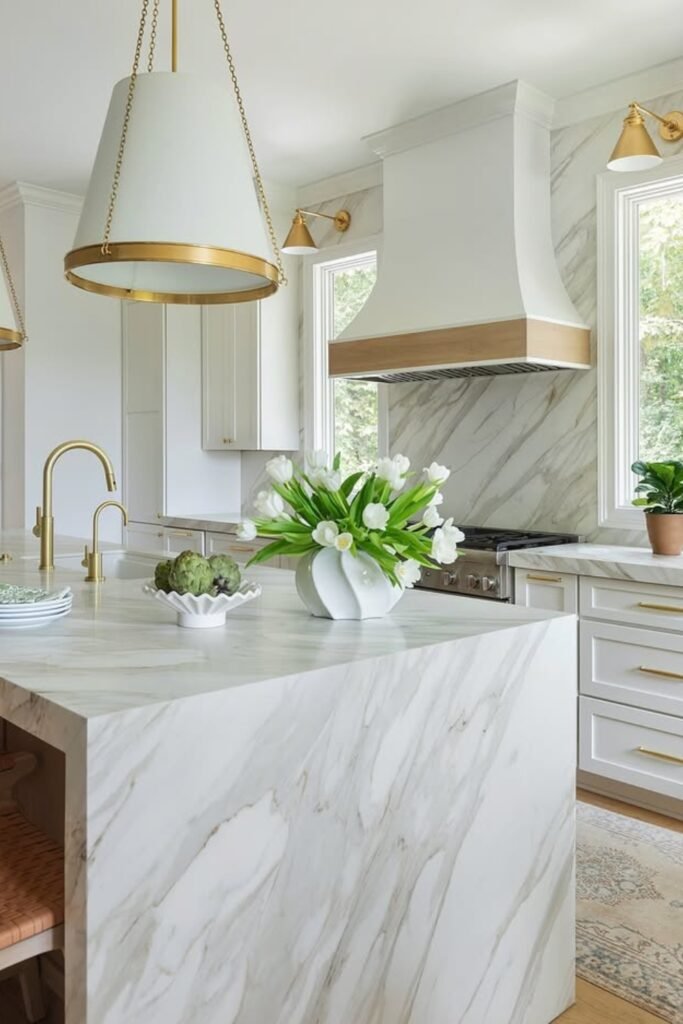
Balance High Ceilings with Layer
Tall ceilings can make your task zones feel dim if you do not layer your lights properly.
This is a perfect example if you have a tall ceiling kitchen.
You can choose the same candle-style pendants that will draw eyes downward over the island.
Then recessed ceiling lights and under cabinet LED lights will handle general and task lighting.
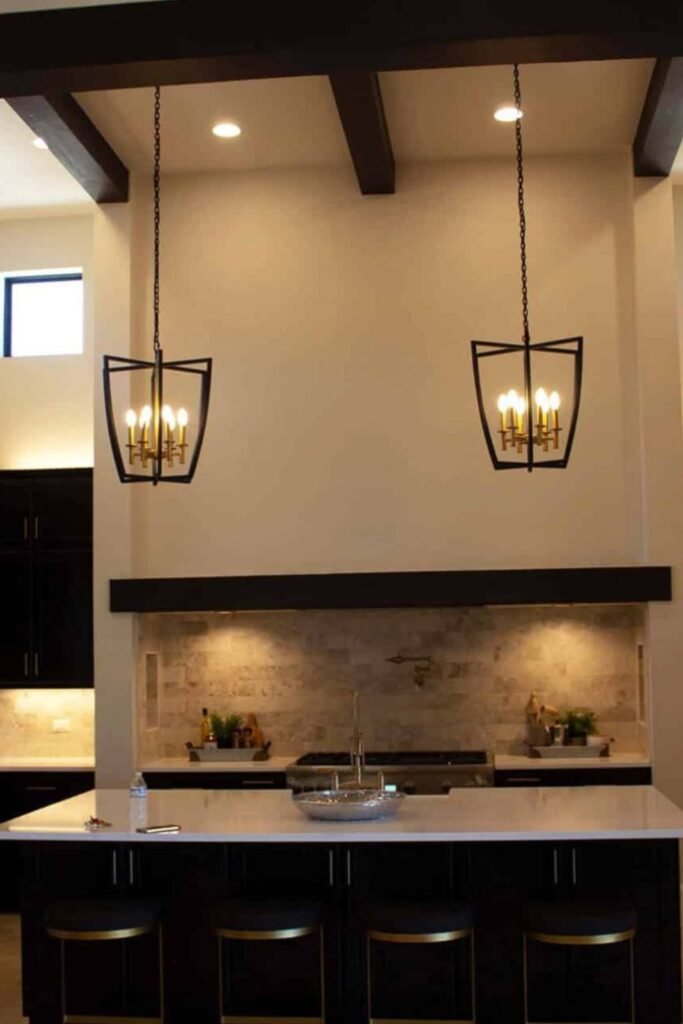
Use Dome Pendants
For a kitchen with a lot of white cabinets, and natural textures, dome pendants with soft curves and warm brass details are perfect to add contrast in space.
These pendants provide task lighting over your island without pulling attention away from the overall design.
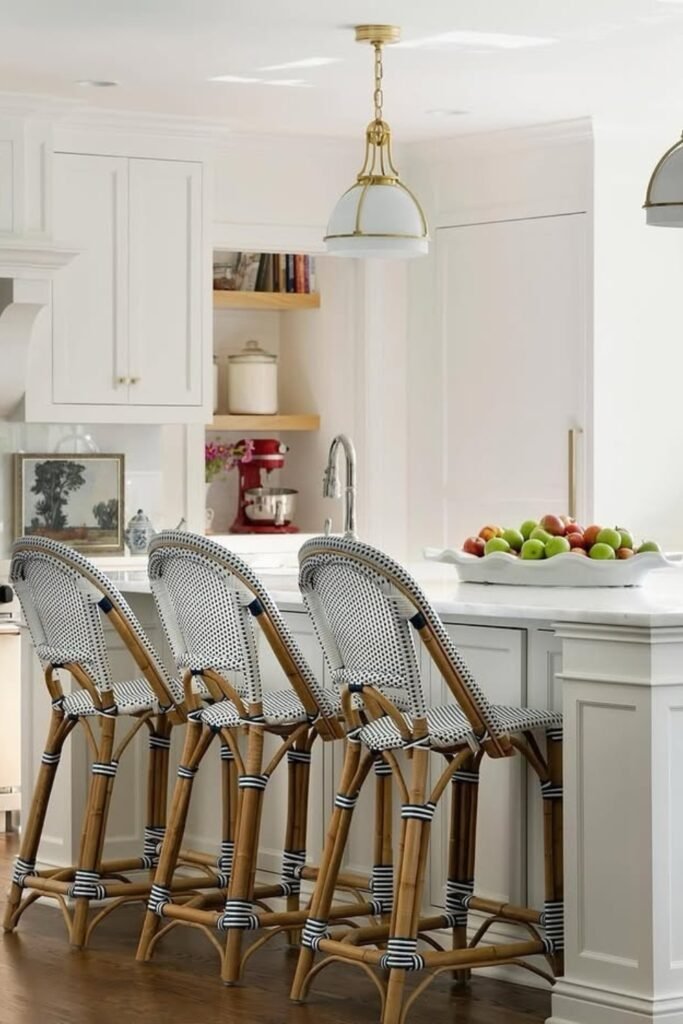
Layer Chandeliers with Wall Sconces
In open kitchens with a mix of wall and island space, you can use a central chandelier for ambient light and decorative sconces near your stove to build warmth.
The chandelier will spread light across your island and sconces will help you to add visual interest and soft illumination near your backsplash.
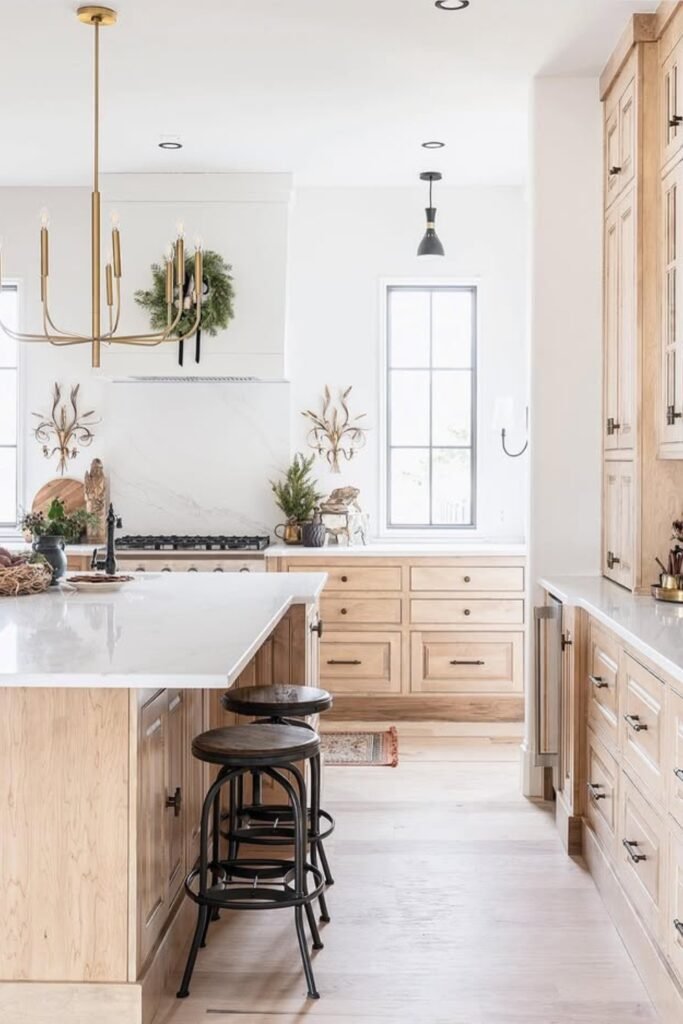
Blend Downlights with Hidden Strips
If you want lighting that can disappear into the background but still does the job, then you can combine flush-mount ceiling lights with under shelf LED strips.
The downlights will spread soft ambient light across your entire space, and hidden stripes will provide targeted brightness over the stove and backsplash.
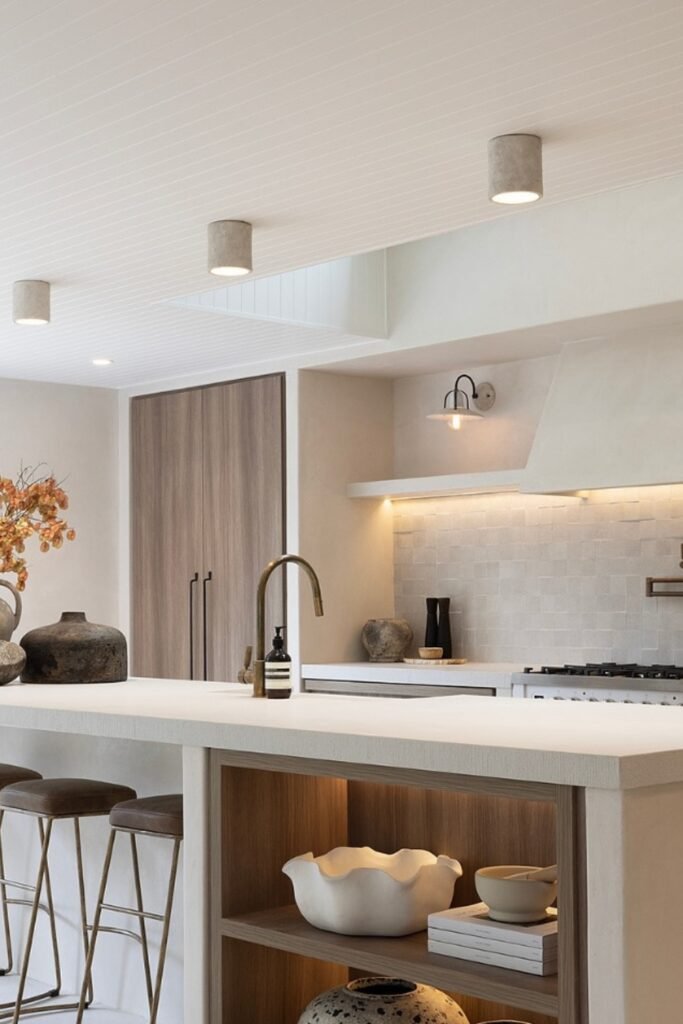
Bar Chandelier to Define Zones
In an open and L-shaped kitchen, a bar style chandelier can help you visually separate your dining and prep area from the rest of your space.
You can consider glass-shaded lights that can throw a warm, inviting glow over the peninsula without overwhelming your ceiling.
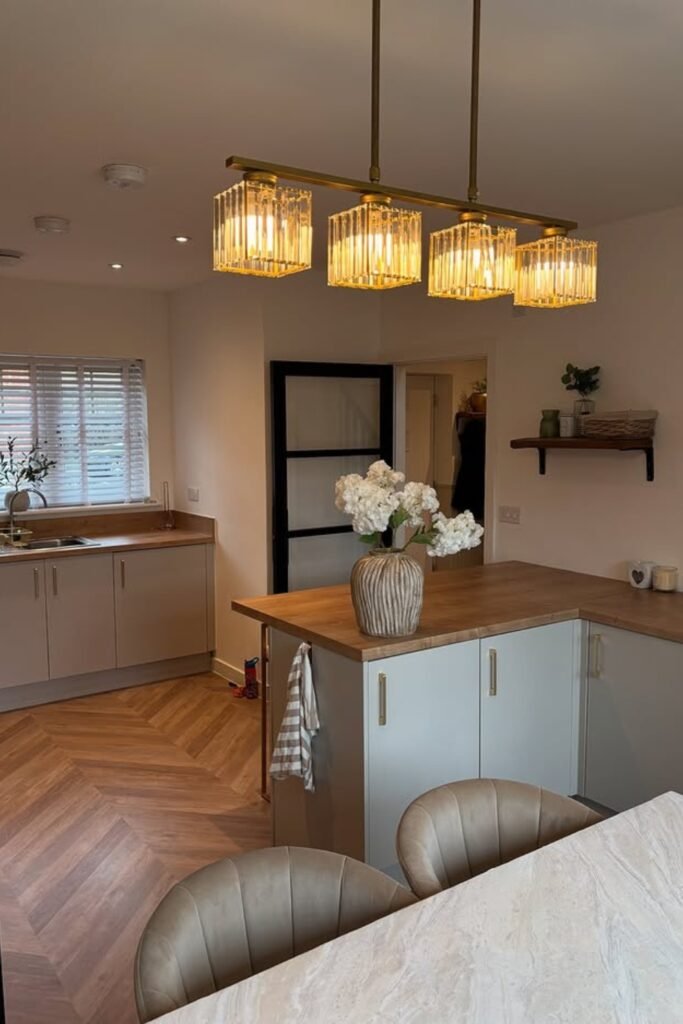
Mount Twin Sconces
If you have a tight kitchen corner where overhead fixtures would not work, you can choose wall-mounted sconces above the sink.
These sconces will provide direct, focused task lighting without overpowering your space.
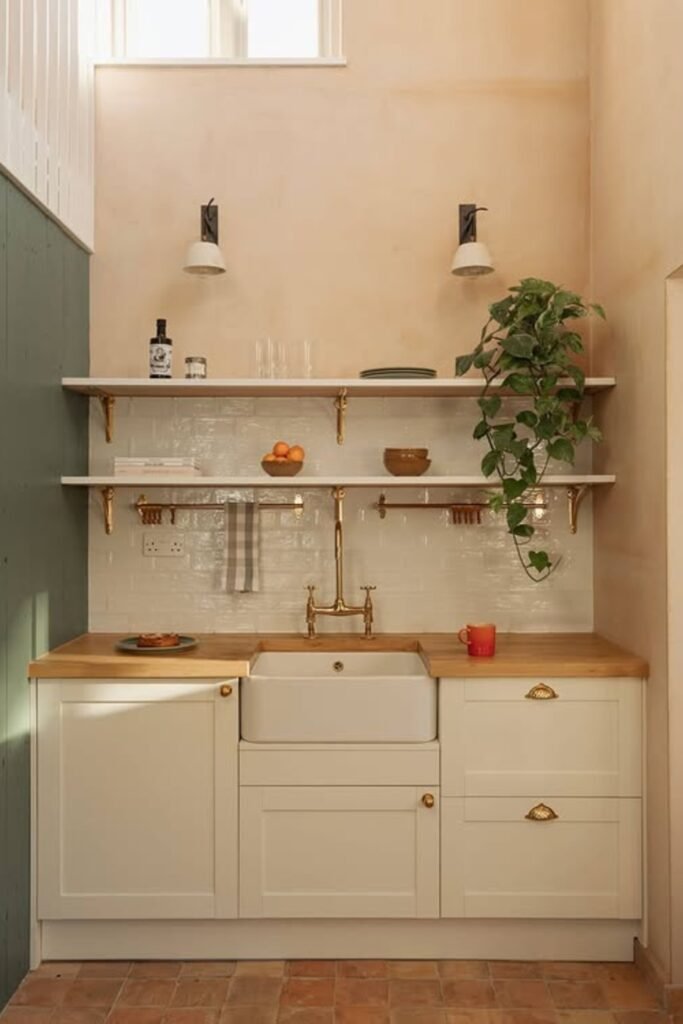
Clear Pendants to Keep the View Open
In kitchens with standout countertops and backsplashes, clear glass pendants can let the materials shine.
You can consider a lantern-style fixture to bring focused light to your island and keep the entire space feel light and airy.
Furthermore you should hang them at eye level about 30-34 inches above the island and use soft white bulbs to avoid hash reflection.
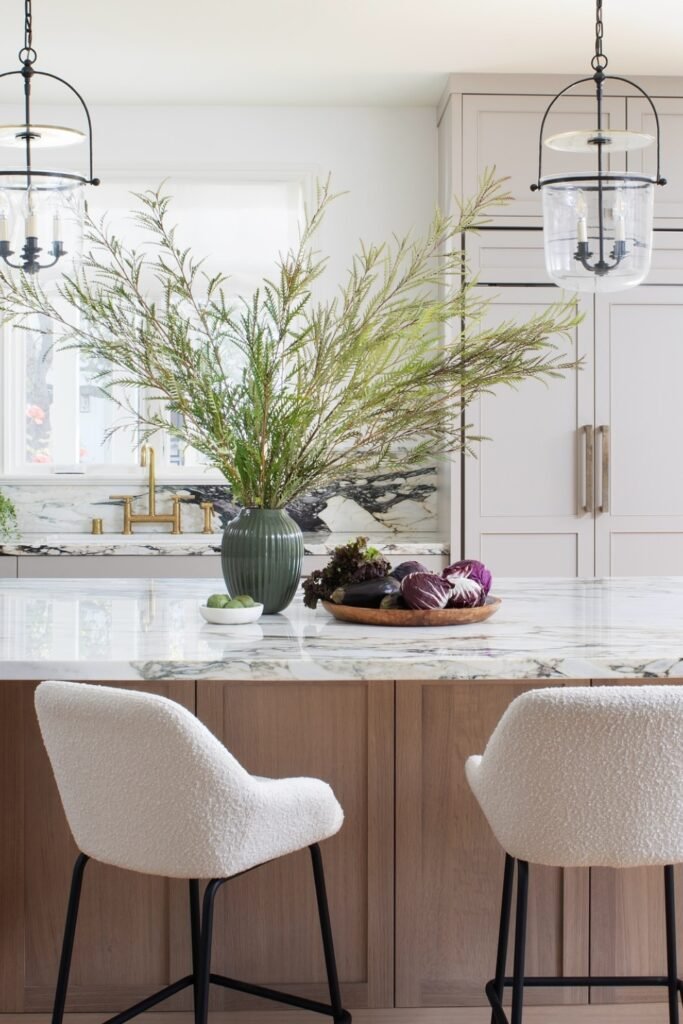
Match Pendant Length to Vaulted Ceilings
Vaulted ceilings can make standard pendant light look lost if you do not hang them low enough.
So, if you want to use a pendant in your kitchen with a vaulted ceiling you can consider extra-long chains to bring the lights down to a usable height.
This idea will work best in cabins, A-frame homes and any kitchen with sloped ceilings.
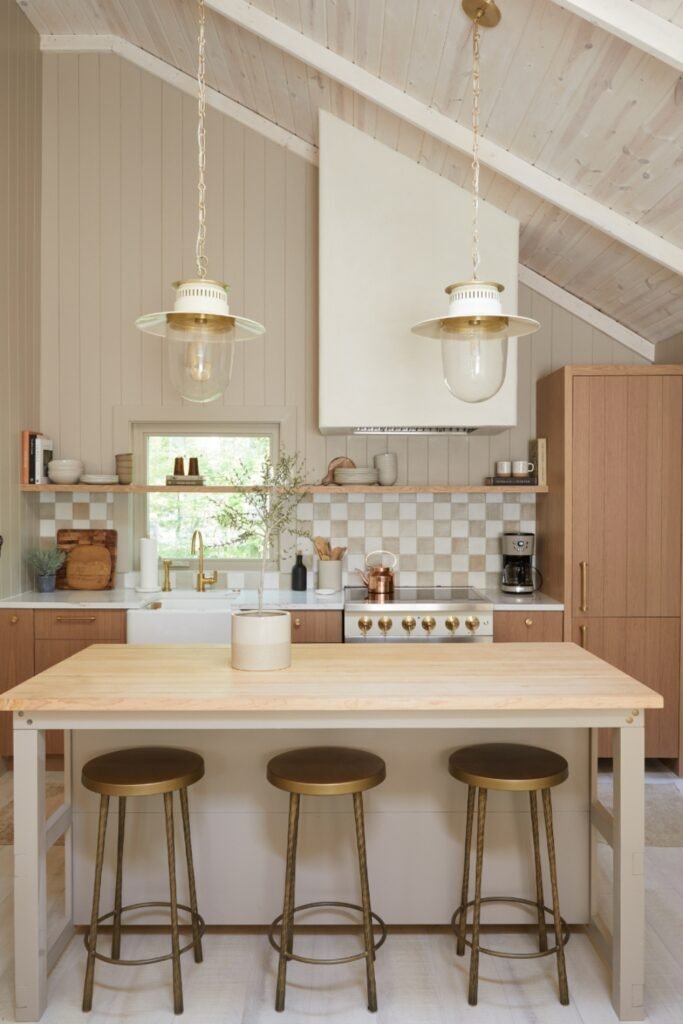
Try Woven Pendants
When your kitchen leans into modern and minimal, you can try woven pendant lights to soften the look.
These basket-style shades can add texture without feeling heavy, and their shape will cast a warm, diffused glow that is perfect for casual dinners.
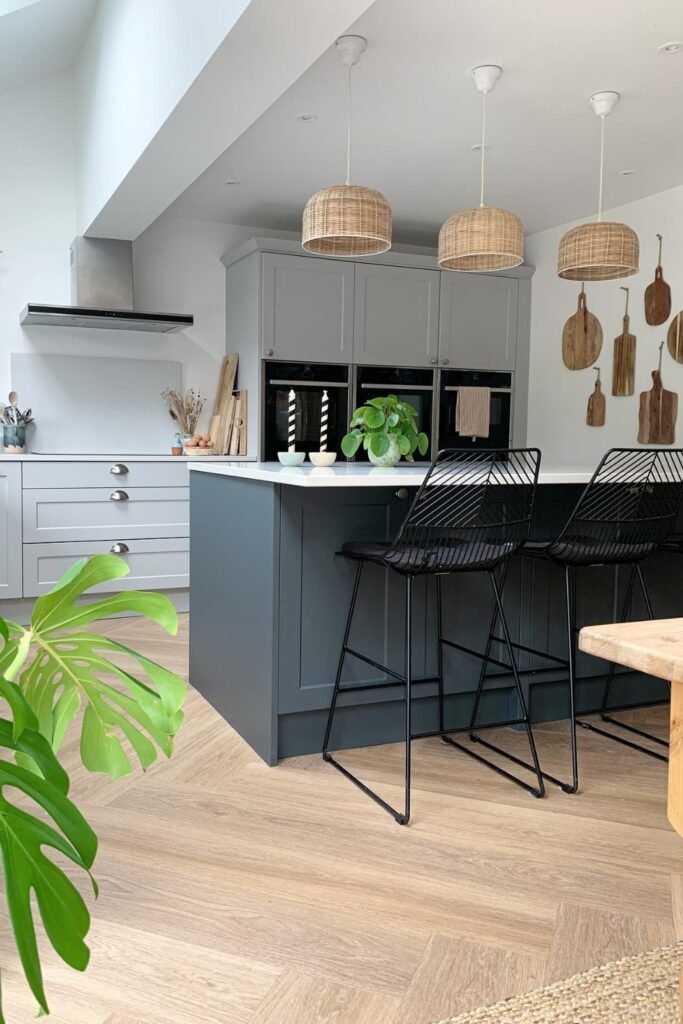
Use Oversized Glass Pendants
If your kitchen has rich wood tones and heavy cabinets, then oversized glass pendants can balance your space.
They will add softness into your kitchen and will not block the view.
The transparent shades will let the bulbs do the work, and still feel open and airy.
You can use dimmable bulbs so you can shift from bright perp mode to soft dinner lighting as you need.
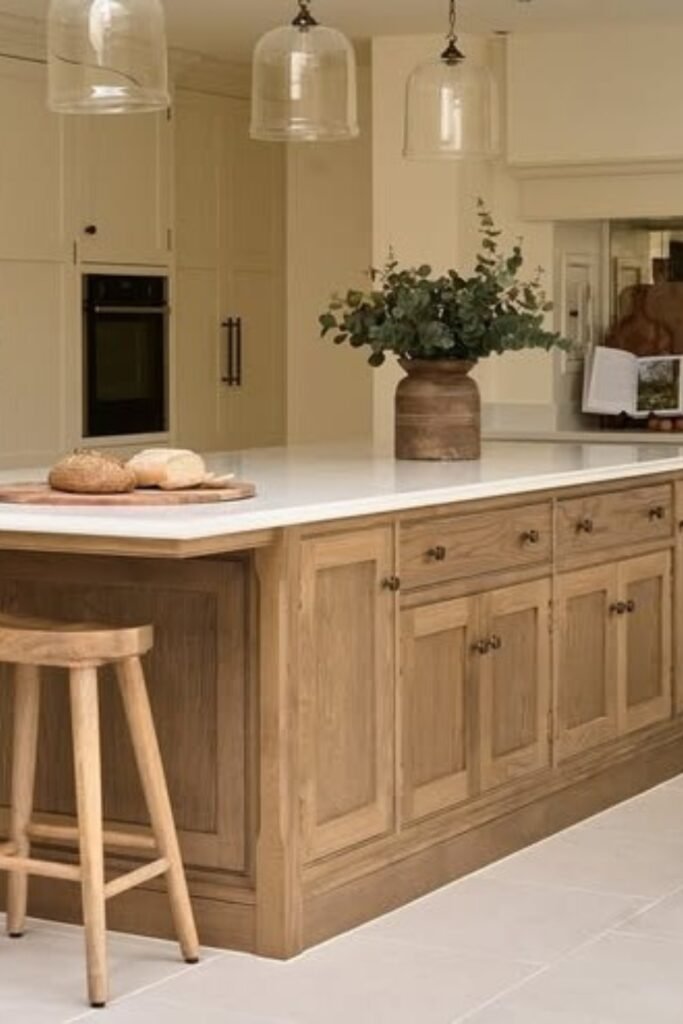
Soften Bold Walls with Glass
Busy backsplashes and wallpapers can clash with heavy lighting, but when you will use ribbed glass pendants they will fix this issue.
This will work best when you will pair it with matching wall sconces for balanced brightness across the shelf and sink.
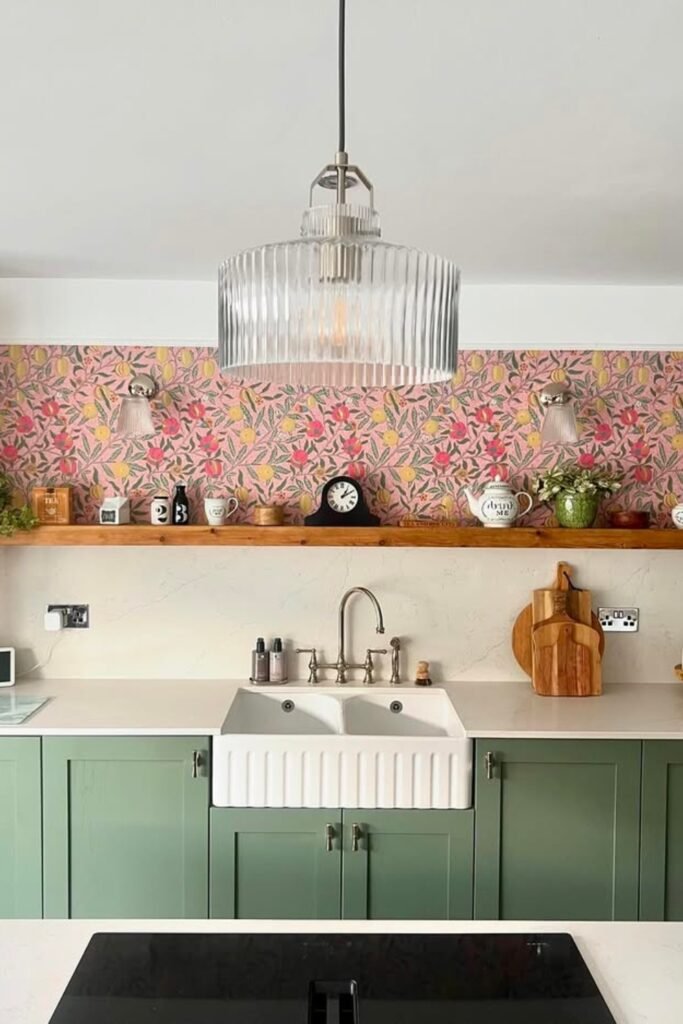
Use Bare Bulb Pendants
If your kitchen gets natural light, you do not need heavy fixtures to make a statement.
These bare bulb pendants with scalloped glass shades can add details without crowding your ceilings.
They will work best in open, sunny spaces where you want lighting that disappears during the day but add warmth in the evening.
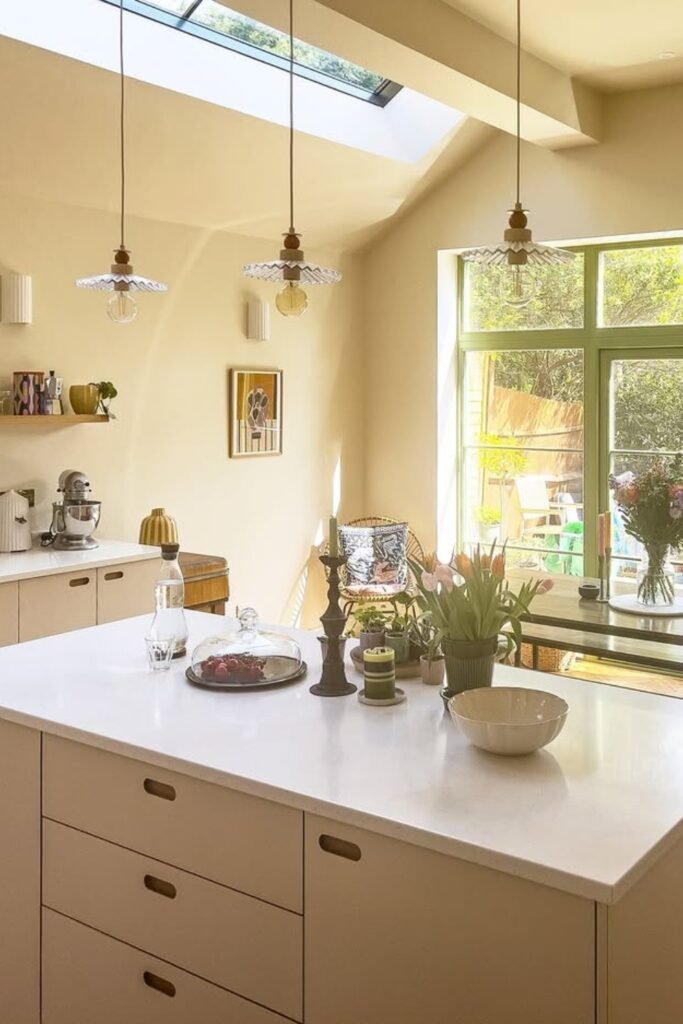
Add Wall Lights
When your kitchen already has bold pendants, you can add simple wall sconces near your prep zone.
Here, the brass and glass wall lights tucked beside the range to bring soft task light to the stovetop.
You can also include a mini table lamp near the corner to add a cozy glow and balance the dark finish.
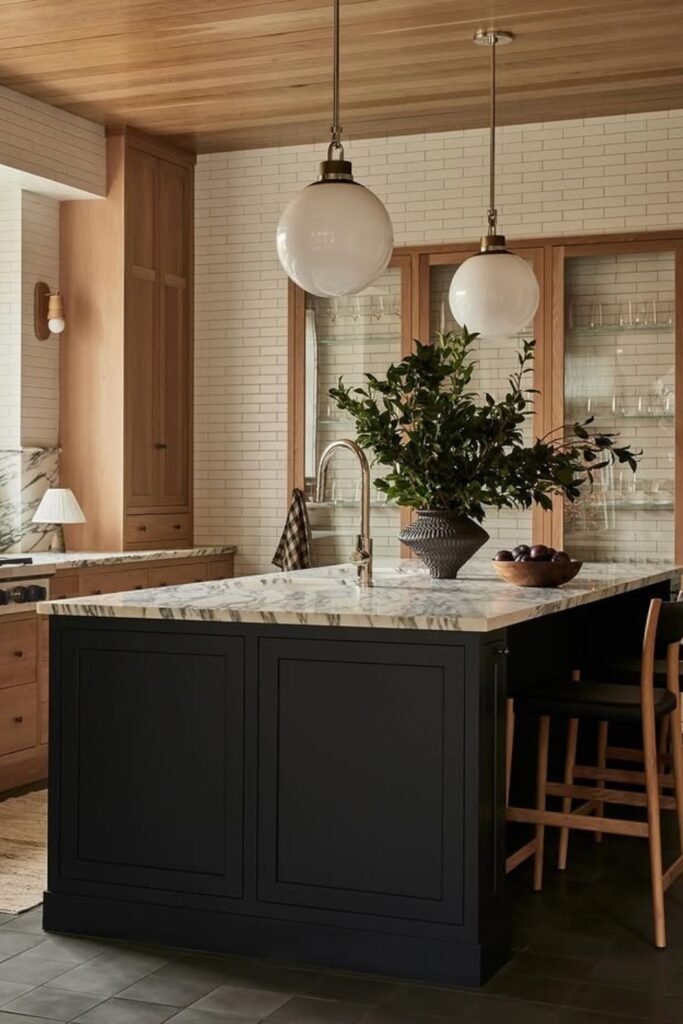
Use Finish Matching Fixtures
Lighting does not have to stand out to do its job well in this kitchen; the warm brass faucet and hardware pair naturally with the lighting.
This trick will work best in kitchens with strong marble patterns and dark cabinets.
You can choose a metallic finish that can match and echo your pendant tone to bounce the light across the surface.
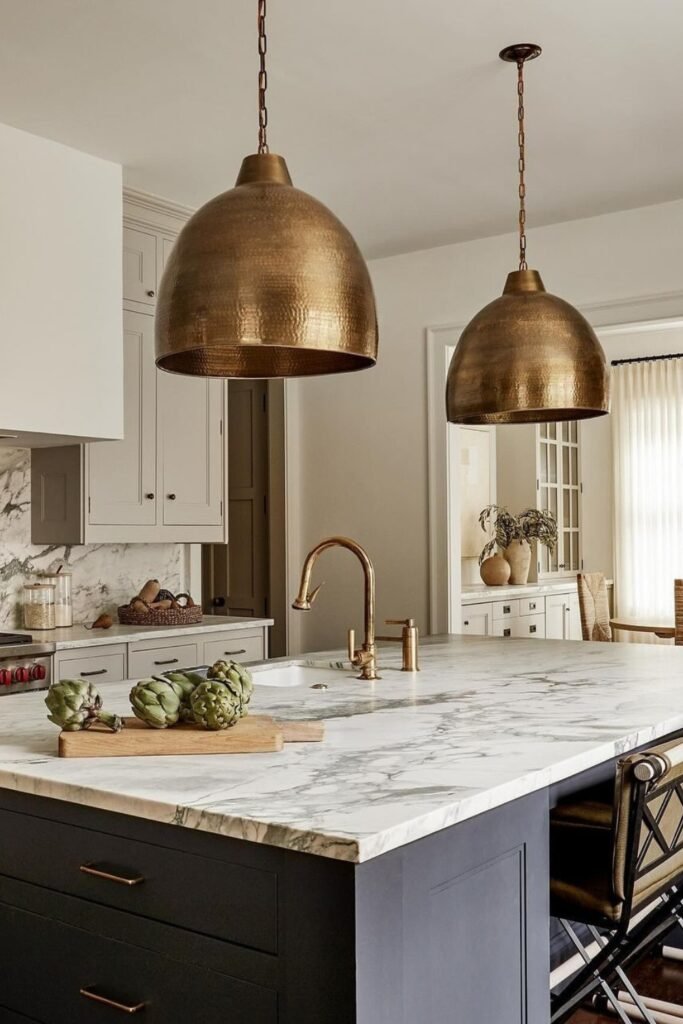
Highlight the Stove
Even with a bold central fixture like this lantern, your stove area still needs its own lighting.
If you look closely you will see small recessed lights above the range, tucked into the ceiling.
These can bring targeted brightness to the cooktop without casting shadows and overpower the visual balance.

Layer with Ceiling Spots
While the sculptural pendant steals the show, it is the even spread of recessed ceiling lights that makes this kitchen actually livable after dark.
These small spotlights will fill in shadowy corners, especially near your cabinets and open shelves.
You can use this trick if your statement fixture does not throw light widely, it will let you highlight details.
